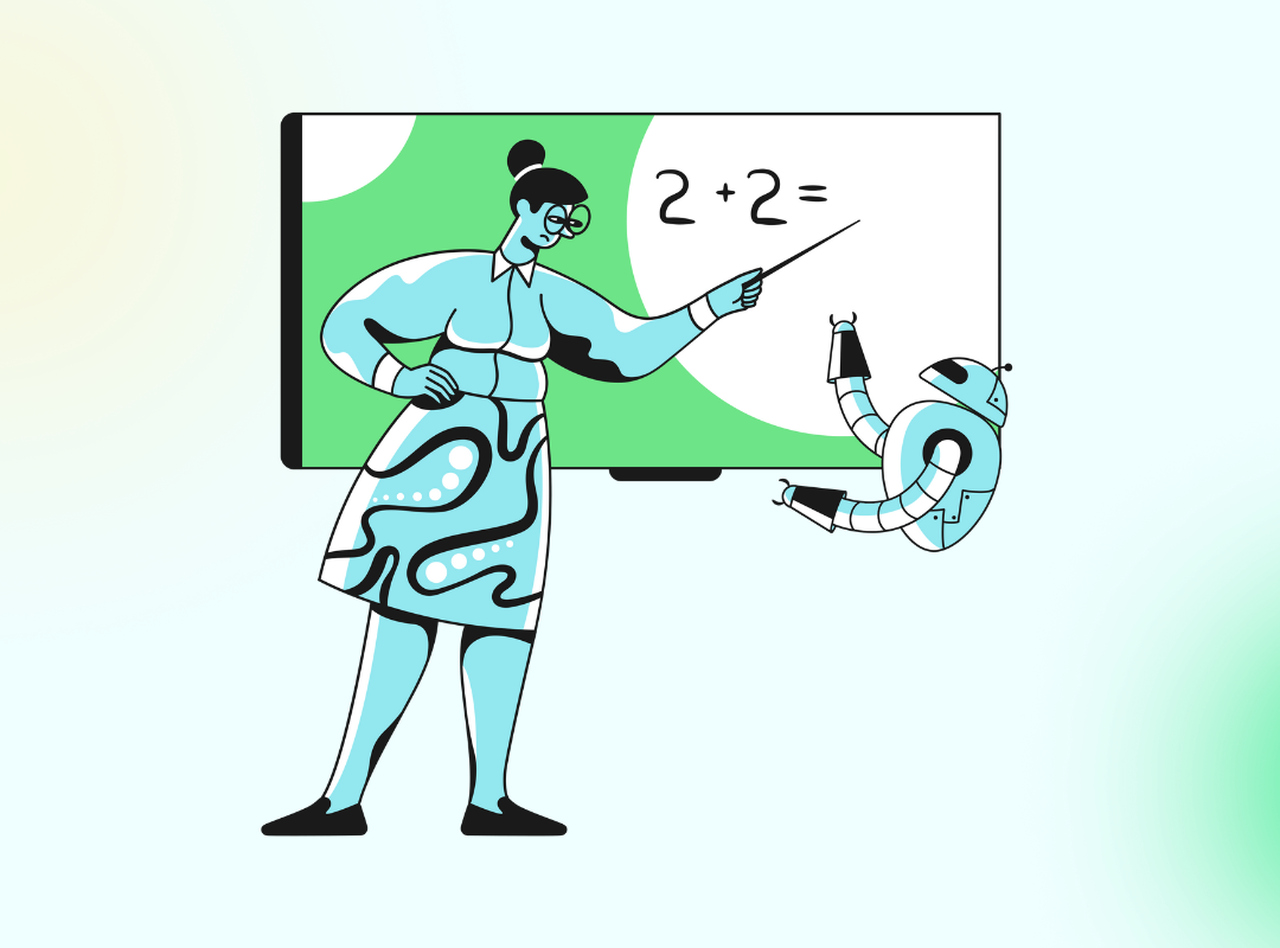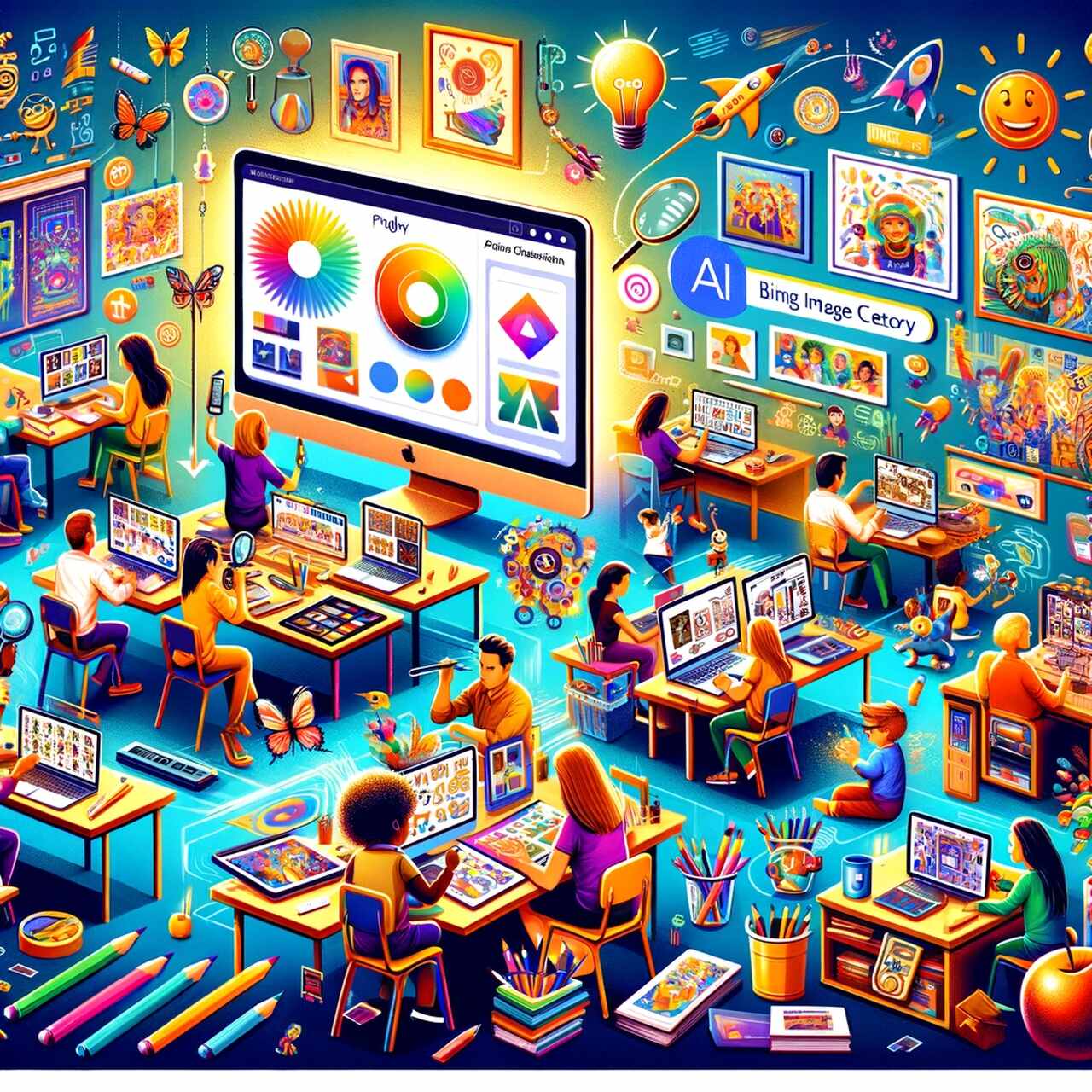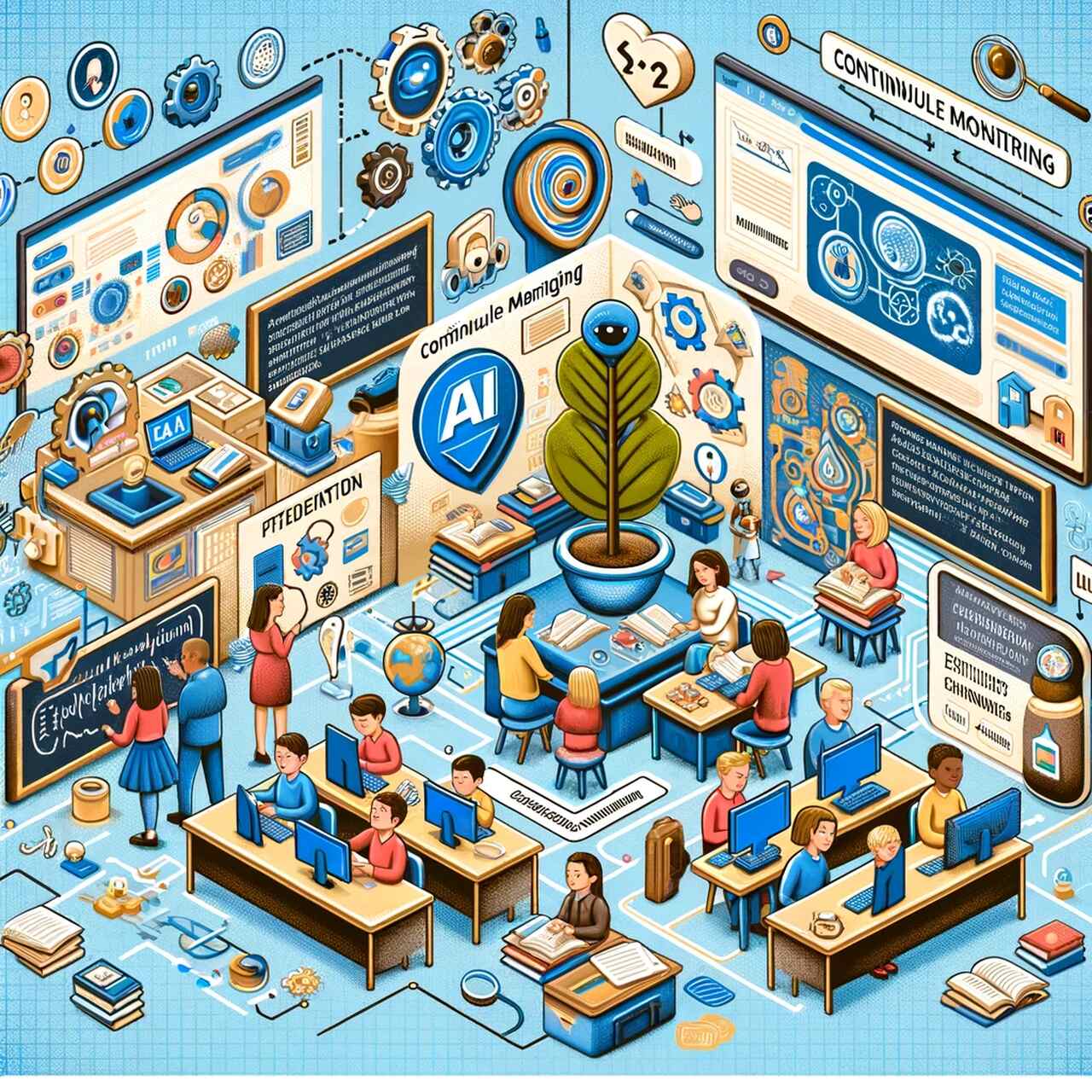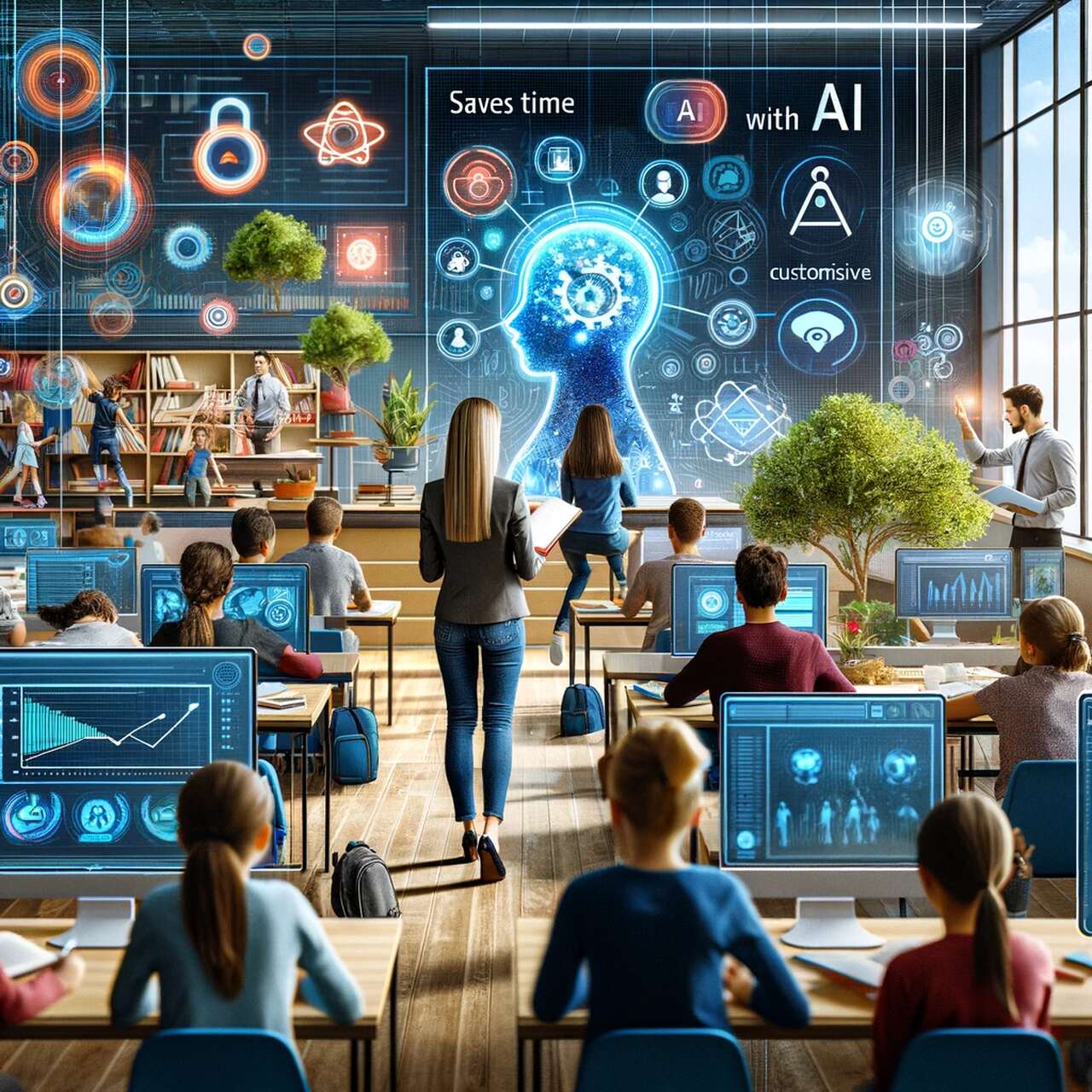
23 Best AI Tools for Teachers That Will Save Time & Effort
AI tools for teachers are now life-saver for teachers and advanced help for students.
No longer confined to the realms of science fiction, AI has seamlessly integrated into various sectors, notably education, offering the limitless potential to revolutionize traditional teaching methods.
With AI tools, educators can now;
- deliver personalized learning experiences,
- streamline administrative tasks,
- significantly boost student engagement,
- marking a new era in educational methodologies that prioritize efficiency, accuracy, and adaptability.
Let’s find out what these best AI tools for teachers are and how they stand out together!
23 Best AI Tools for Teachers for Enhancing Education
This blog post explores 23 of the best AI tools for teachers that can revolutionize the classroom experience for you.
These tools cater to various needs, from lesson planning and content creation to student assessment and classroom management.
We hope that the categories that are meticulously chosen help you and your class!
AI Tools for Educators
AI tools such as Bing Chat, ChatGPT, Google Bard, and Pi are revolutionizing the way educators interact with information and manage classroom tasks.
These innovative tools offer unparalleled efficiency, providing educators with quick, intelligent responses to a wide array of queries and assisting in creative idea generation, lesson planning, and enhanced communication, thereby significantly streamlining the impact of AI on educational institutions and processes.
1. Bing Chat: This is powered by ChatGPT-4, a sophisticated AI model. Bing Chat can assist teachers with browsing the web, summarizing articles, generating creative ideas, and more. It's free and can be accessed through the Bing website or Microsoft Edge browser.
2. ChatGPT: This AI chatbot interacts conversationally like a human. It's trained on a wide range of internet data and human interactions. It offers free and premium plans, with the premium plan providing faster responses and priority access to new features.
3. Google Bard: An experimental AI chat service by Google, Google Bard offers text-based conversations, generating human-like dialogues in response to user prompts.
4. Pi: Pi is a personal AI assistant that can answer queries and assist with various tasks. It's a free tool designed to be supportive, smart, and available whenever needed.

Visual & Design Tools
AI tools like Adobe Express with Firefly, Bing Image Creator, Pictory, and Canva Classroom Magic are redefining the visual and design aspects of education, offering educators an efficient and innovative way to create engaging images, videos, and designs.
These tools not only streamline the content creation process but also open up new avenues for creative expression and effective communication in the classroom.
5. Adobe Express with Firefly: Adobe's Firefly generative AI model, integrated with Adobe Express, allows educators to create custom images and text effects using text prompts.
6. Bing Image Creator: Powered by DALL-E technology, Image Creator generates AI images based on user input text.
7. Pictory: A platform that uses AI to turn written scripts or articles into captivating videos. It offers a free trial plan and paid plans for more features.
8. Canva Classroom Magic: A suite of AI tools designed for educators, including Magic Design, a free AI design tool, and Magic Write, an AI text generator and writer.
Lesson Design & Content Creation Tools
AI tools like Curipod, Diffit, MagicSchool.ai, and Education Copilot are revolutionizing the way educators develop and deliver educational material.
These cutting-edge tools offer unparalleled efficiency in generating tailored lesson plans, interactive materials, and diverse educational resources, enabling teachers to craft highly engaging and personalized learning experiences for their students.
9. Curipod: It generates an interactive slide deck for teachers based on a given topic. The generated slides can be edited and adjusted to suit the teacher's needs.
10. Diffit: This tool allows teachers to get leveled resources for any topic. It generates resources based on the provided content.
11. MagicSchool.ai: An AI-powered educational platform that automates tasks like lesson planning, grading, and content generation.
12. Education Copilot: This tool provides AI-generated templates for lesson plans, writing prompts, educational handouts, and more.

Teaching Aides
AI-driven teaching aides like gotFeedback by gotLearning, Grammarly, Goblin Tools, and Hello History are transforming the educational landscape by providing targeted, efficient support in key areas of teaching.
These tools enhance the teaching experience by offering individualized feedback, improving writing skills, supporting neurodivergent learners, and bringing history to life, thereby enriching the learning environment and making education more accessible and engaging for all students.
13. gotFeedback by gotLearning: This tool helps teachers provide more individualized feedback to their students.
14. Grammarly: An AI-powered writing assistant that checks grammar, spelling, style, tone, and more.
15. Goblin Tools: A collection of tools designed to help neurodivergent people with tasks they find overwhelming or difficult.
16. Hello History: An app that allows users to engage in life-like conversations with historical figures.

Quiz/Assessment Generators
The integration of AI in quiz and assessment generation through tools like QuestionWell, Formative AI, Quizizz AI, and Conker is revolutionizing the way educators evaluate and enhance student learning.
These innovative platforms offer an efficient means to create diverse, level-appropriate, and curriculum-aligned quizzes and assessments, enabling teachers to effectively measure and support student progress across a range of subjects and competencies.
17. QuestionWell: An AI tool that generates an endless supply of questions, learning objectives, and multiple-choice questions based on a reading.
18. Formative AI: An assignment and quiz platform that uses ChatGPT to generate standard-aligned questions and hints for learners and provide feedback.
19. Quizizz AI: This tool can generate multiple-choice questions from the content provided.
20. Conker: It allows teachers to create quizzes for students at various levels on specific topics.
Collaboration & Communication Tools
Enhancing collaboration and communication in educational settings, AI tools like FigJam Jambot, summarize.tech, and Parlay Genie are pivotal in fostering interactive and thought-provoking learning environments.
These tools leverage AI to streamline content synthesis, facilitate engaging discussions, and bring a new level of depth and efficiency to classroom interactions, making them invaluable assets for modern educators and students alike.
21. FigJam Jambot: A FigJam widget that brings the power of ChatGPT’s AI to your boards.
22. summarize.tech: An AI tool that provides a summary of any long YouTube video.
23. Parlay Genie: A discussion prompt generator that generates higher-order thinking questions for your class based on a topic, a YouTube video, or an article.
In conclusion, the best AI tools for teachers can enhance education by offering personalized learning experiences, automating administrative tasks, and improving student engagement.
Educators can create a more engaging, inclusive, and effective learning environment by adopting the right tools.
How to Use AI Tools in Education
In the evolving landscape of modern education, the integration of Artificial Intelligence (AI) tools presents a unique opportunity to enhance both teaching and learning experiences.
To effectively implement these technologies, educators, and administrators should consider a comprehensive approach that encompasses various facets of the educational ecosystem.
Understanding the Scope of AI in Education
Before diving into AI tool implementation, it's crucial to understand the breadth of AI's capabilities.
AI can offer solutions for personalized learning, administrative automation, real-time feedback, and data-driven insights into student performance and engagement.
Identifying Educational Needs and Goals
The first step in using AI tools effectively is to identify the specific needs of your educational setting.
This involves assessing the learning objectives, understanding student demographics, and recognizing the areas where AI can bring significant improvements, such as in personalized learning plans, grading systems, or interactive educational content.
Selecting the Right AI Tools
With a plethora of AI tools available, selecting the right ones is critical.
Tools like ChatGPT can enhance interactive learning and tutoring, Grammarly can aid in improving students' writing skills, and platforms like Pictory or Adobe Express with Firefly can assist in creating engaging visual content.
The selection should align with your educational objectives and technological capabilities.

Integrating AI Tools into the Curriculum
The integration of AI tools should complement and enhance existing curricular structures.
This can be achieved by using these tools in lesson planning, as teaching assistants for personalized learning paths, or for generating new, interactive content that aligns with curriculum standards.
Training and Professional Development
To maximize the benefits of AI tools, both educators and students need to be well-versed in their usage.
Conducting training sessions and workshops can help familiarize everyone with the functionalities and potential of these tools.
Continuous professional development should be encouraged to keep up with evolving AI technologies.
Continuous Monitoring and Feedback
Once implemented, it's important to monitor the effectiveness of AI tools continuously.
Regular feedback from students and educators can provide insights into how these tools are enhancing or could further improve the learning experience.
This feedback loop helps in adapting the AI tools to meet educational goals better.
Addressing Ethical and Privacy Concerns
AI in education raises important ethical questions, particularly regarding data privacy and security.
Educators should address these concerns by ensuring the compliant use of AI tools, educating students on digital citizenship, and fostering an understanding of the ethical implications of AI.

Staying Informed and Adapting to Changes
The field of AI is rapidly evolving, with new tools and updates emerging frequently.
Adapting to new technologies and methodologies as they arise ensures that the educational benefits of AI are fully realized.
Encouraging Collaborative Learning Environments
AI tools can foster collaborative learning environments.
Platforms like Parlay Genie or FigJam Jambot can enhance group discussions and collaborative projects, making learning more interactive and socially engaging.
Enhancing Assessment and Feedback
AI tools like Formative AI or Quizizz AI can revolutionize the way assessments are conducted. These tools can provide instant feedback, generate personalized quizzes, and help in tracking student progress over time, making assessments more efficient and informative.
Educators can create a dynamic, inclusive, and effective learning environment by strategically incorporating AI tools into the educational framework.
This environment caters to students' diverse needs and prepares them for a future where technology and AI are integral parts of everyday life.

Benefits of AI in Education
Still unsure about incorporating AI into your teaching toolkit? Let's explore how these advanced tools can transform your educational approach:
- Efficiency Boost: AI technology is a game-changer for educators, cutting down on time-consuming administrative tasks. This newfound efficiency frees up valuable time, allowing teachers to focus on what truly enriches the teaching experience - forging meaningful connections with students and crafting more dynamic and engaging lessons.
- Tailored Educational Experiences: AI stands at the forefront of customized learning. Tools such as Gradescope and Formative AI empower teachers to monitor and understand each student's unique learning journey. By analyzing performance data, these AI solutions enable educators to craft lessons that address individual strengths and areas for growth, ensuring every student receives the attention and support they need to excel academically.
- Enhanced Student Involvement: AI isn't just about efficiency; it's also about making learning captivating and enjoyable. Tools like ClassPoint AI spark curiosity and maintain concentration in the classroom by integrating interactive elements and gamification into the learning process, keeping students actively engaged and absorbed in their education.
- Insightful Analytics: AI tools do more than just automate; they provide key insights into student performance and engagement. This data is invaluable for educators, allowing them to pinpoint areas for improvement, track academic progress, and refine their teaching methods to suit the needs of their students better.
To Conclude
In conclusion, the diverse range of AI tools available for educators, from Bing Chat to Parlay Genie, represents a significant leap forward in the field of education technology.
These tools not only streamline various aspects of teaching and learning but also open doors to innovative methods of student engagement and personalized education.
As we embrace these advancements, the landscape of education is poised for a transformation, making learning more efficient, interactive, and tailored to individual student needs.
For further reading, you can also take a look at other beneficial blog posts that we have prepared!






